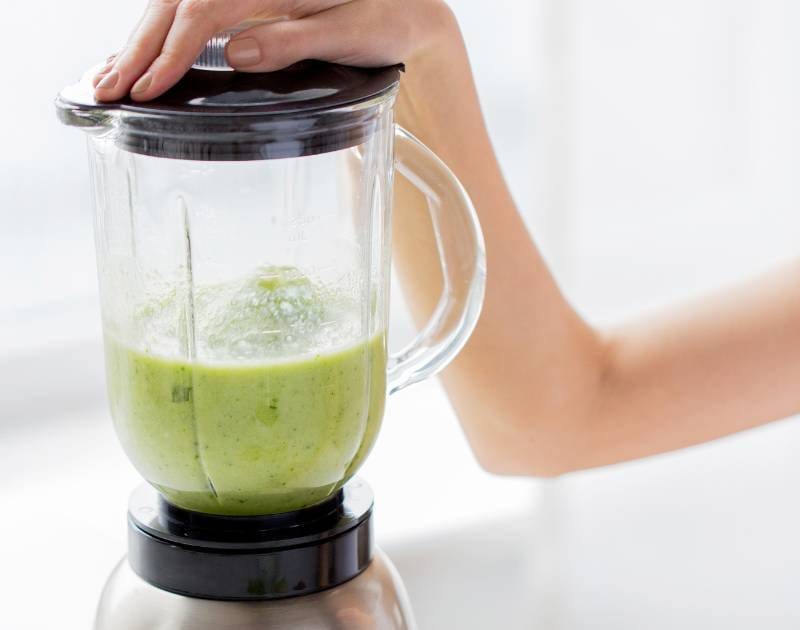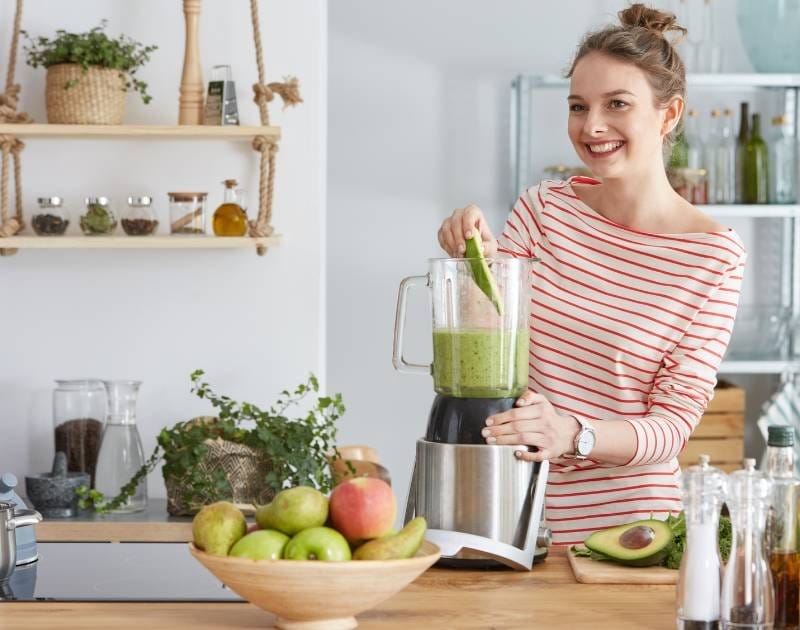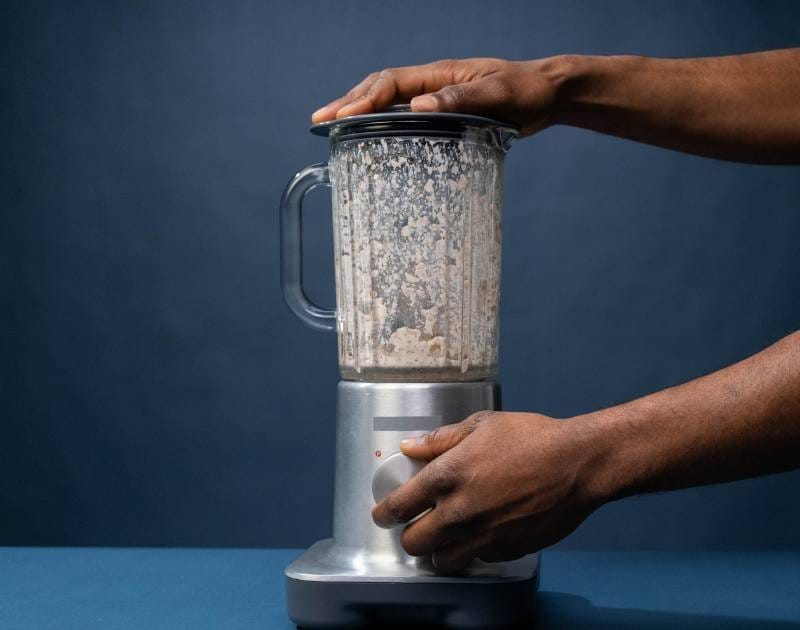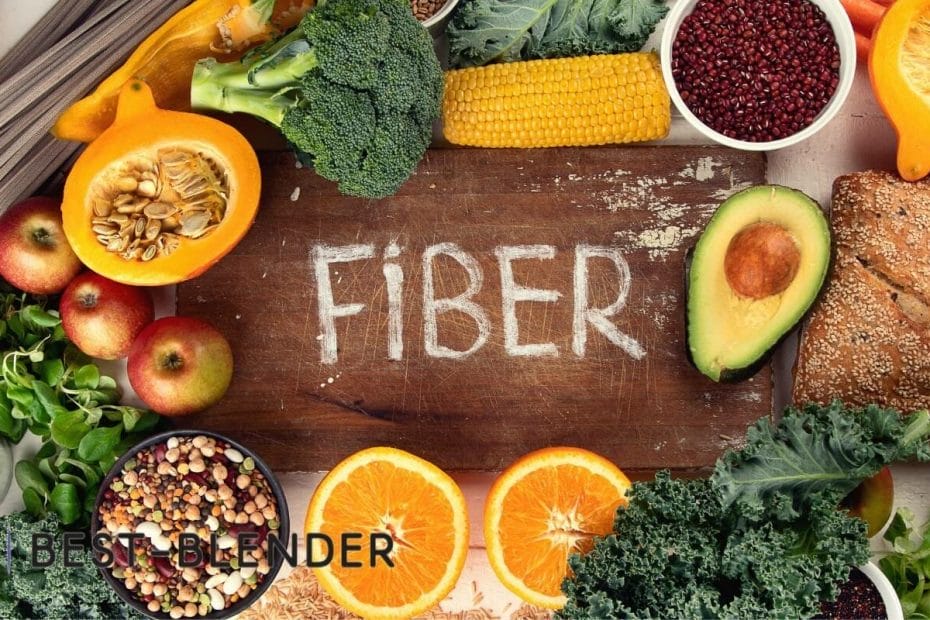If you’re starting to get into the healthy-eating scene, or you’re looking to enhance your current diet regime, you may be considering integrating a blender into the mix.
A blender can be a powerful tool in ensuring you are feeding your body with core nutrients, for example your five-a-day. Wide varieties of fruits can be thrown into a blender and whizzed up to create a refreshing, healthy drink- with a wholesome, satisfying taste. Smoothies and juices can become your one and only breakfast item too- making them extremely efficient for those of us who are short on time in the mornings, or don’t have the culinary skill to craft amazing morning breakfasts.

One common nutrition question that often arises is whether or not blending destroys fiber.
In short- your blender will not break down fiber enough for you to worry about.
Fiber is a core nutrient for our body’s digestive and cardiovascular health. Extra fiber can be integrated into blended drinks in a variety of ways. You can add a spoonful of psyllium husk, add some nuts or seeds, use the fiber of vegetables, or even the fiber of fruits via fruit peels for a tasteless way of consuming the less-desirable parts of our favourite fruits, and enable adequate fiber intake. This article will address this question and establish whether or not blending is the right option for you, in terms of your intake of fiber.
What Do We Know?
In short, the answer is no. There have been various studies into this notion, after a popular blender experiment claim made by Dr. Brian Clement- director of the Hippocrates Health Institute. He stated that the blending process results in an 85-92% nutrient loss (vitamins, probiotics, and optimum fiber)- hence ‘green smoothies’ shouldn’t be considered a “health food. He even went on to say that they’re better off being considered recreational drinks- which is what we classify milkshakes and frappucinos into!
This claim implies that most green smoothies which we create would only retain 8-15% of the nutrient and optimum fiber absorption which we put into the drink.

Juicing may add some weight to this claim, but blending is slightly different. Juicing involves heavy-duty extraction from the foods you put into the machine- for example, when creating apple juice, you’ll often find a compartment situated on the rear of the juicer for collecting the fiber. This is comprised of the drained apple flesh (water content removed), the stalk, the membrane of the apple, and any other fibrous skin. This is pretty much the good stuff gone- and the sugars, flavours, water, and aqueous nutrients have been converted into a juice. So essentially, juicing is detrimental to nutrient retention- and retention of fiber especially!
A decent blender, on the other hand, works differently. While some bacterial cultures and fibre may be destroyed as a result of the heat produced, it won’t be significant enough to pay heed to. You aren’t losing any of the food, like you would in a juicer. The entire product goes into the blender and the entire product comes out. The worst that could happen is minute mineral/nutrient/fibre breakdown, into another form.
What Actually Happens to the Fibre?
Whenever you eat food, your insulin levels spike- leading to absorption of carbohydrates, fats, sugars, and other nutrients. This will occur in even the healthiest diet out there. Fruits and vegetables contain various mixtures of insoluble and soluble fiber- for example, sweetcorn has an insoluble, indigestible outer casing which exits the body wholly in waste.

Both types of fibre work simultaneously to slow the insulin release process and catalyse a higher-quality digestion- hence it’s such a key aspect in weight loss. Blending does this job for you- the mastication (chewing) process, and breaking down of the food is pre-completed. This leads to a spike in insulin levels, blood sugar, and faster glucose release into your liver. Hence, we can’t reap the benefits of fiber as well. This is still far better than not consuming the nutrients at all, or eating junk food instead- so unless you have an alternate means of consuming plenty of fiber (for example eating fresh foods/healthy foods whole), don’t come to a rash decision about blenders, or ditch it altogether for some hearty junk food.
The type of blender you have won’t change the nutrient breakdown or loss of nutrients. Purchasing a professional blend, or a powerful blender will not make bring back or prevent loss of essential nutrients- in fact, it may do more harm due to the excessive blending power. Slower blenders (less powerful types of blenders) may actually benefit you more in this situation.
Excess Fiber: Why It’s Bad
On the contrary, there is the realm of too much fiber. If you follow on with questionable claims such as the one we mentioned earlier regarding green smoothies, you’ll likely be tempted to throw in some fiber supplements to boost your drink and compensate for the “detrimental fibre loss” that occurs as a result of blending.
Excessive fiber consumption may result in consequent mineral loss- which is never a good thing. We need minerals to keep our cells optimal and healthy. The major problem associated with excessive fiber is constipation. While it’s considered an uncomfortable, ‘gross’ topic- it can be fatal or extremely detrimental to health if overlooked.

Fiber acts as a fecal bulking agent, meaning it can be used to treat diarrhoea. It is designed to bulk up your waste (poop). If you consume too much fiber, your waste will harden and have difficulties moving through the intestines due to the lack of lubrication. Hence, common natural remedies for constipation include olive oil, prunes, and other gel-based medicines. These are designed to lubricate the gastrointestinal tract and facilitate the excretion process. The alternative is bowel enlargement medication- but this can lead to loose bowels and fecal incontinence if used too often.
We recommend avoiding these issues altogether by consuming as many of your nutrient-rich foods as whole as they naturally come to us. If not- go ahead and pop them in a blender. It’s better than not eating them at all. And to myth-bust, green smoothies are anything but a leisurely, pleasure-exclusive drink. They’re a great source of vitamins, antioxidants, minerals, phytonutrients, and dietary fiber. dietary fiber, and an excellent source of vitamins, minerals, antioxidants, and many other phytonutrients.
Contents [show]
